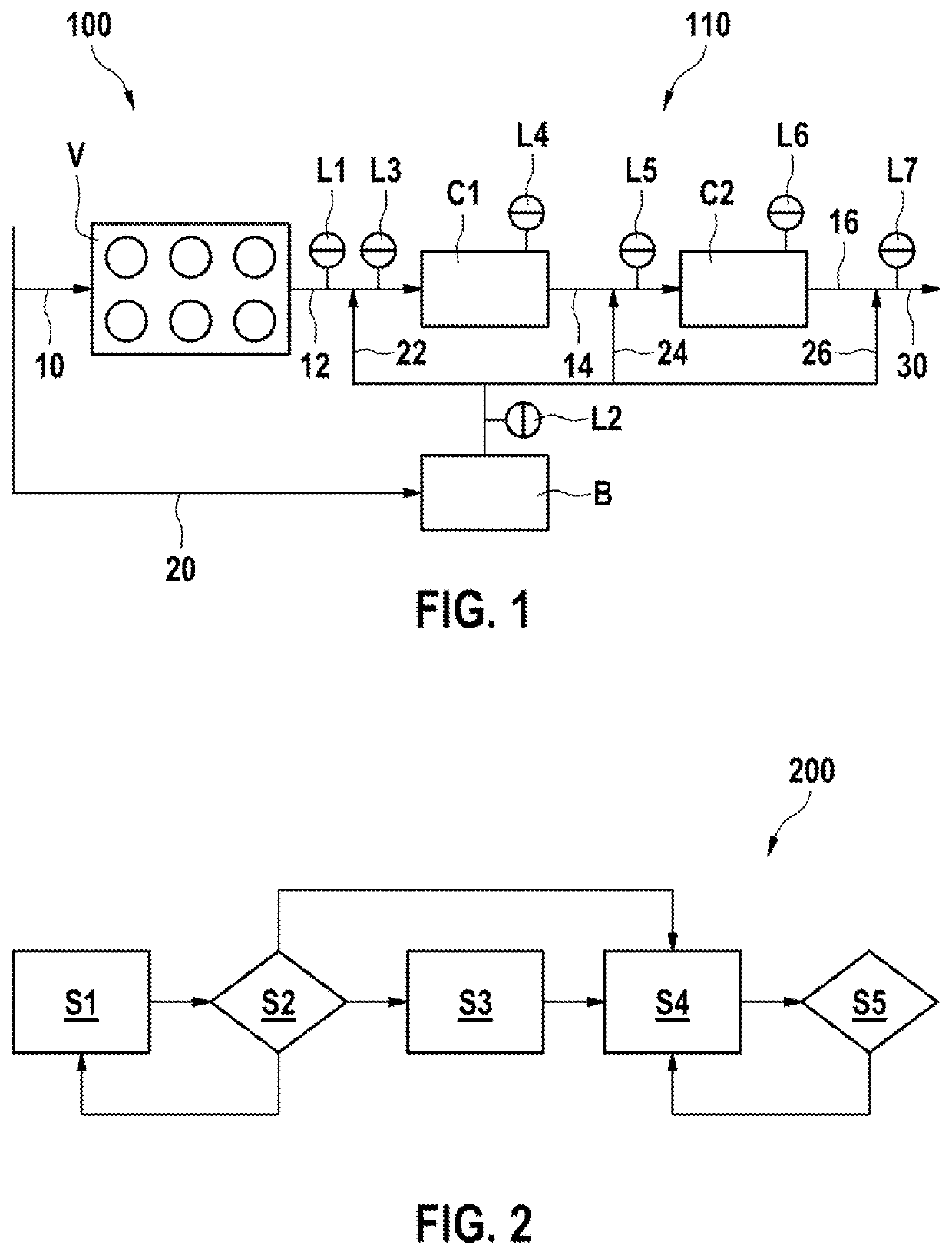Lambda compensation with exhaust-gas burner
- Summary
- Abstract
- Description
- Claims
- Application Information
AI Technical Summary
Benefits of technology
Problems solved by technology
Method used
Image
Examples
Embodiment Construction
[0028]FIG. 1 schematically illustrates a vehicle 100 with an internal combustion engine V and an exhaust-gas aftertreatment system 110.
[0029]The internal combustion engine V may be designed for example in the form of an Otto-cycle engine, a diesel engine and / or a Wankel or rotary piston engine. A lean-burn engine with applied ignition may also be used as the internal combustion engine V.
[0030]The exhaust-gas aftertreatment system 110 is arranged downstream of the internal combustion engine V and comprises at least one, in the illustrated example two, catalytic converter(s) C1, C2, an exhaust-gas burner B and one or more sensors L1 to L7, of which at least one is in the form of a lambda probe L1.
[0031]The exhaust gas 22, 24, 26 of the exhaust-gas burner B can in this case be merged with the exhaust gas 12 of the internal combustion engine V at various points. Possible points for the merging are in each case upstream and downstream of the two catalytic converters, because respectively...
PUM
 Login to View More
Login to View More Abstract
Description
Claims
Application Information
 Login to View More
Login to View More - R&D
- Intellectual Property
- Life Sciences
- Materials
- Tech Scout
- Unparalleled Data Quality
- Higher Quality Content
- 60% Fewer Hallucinations
Browse by: Latest US Patents, China's latest patents, Technical Efficacy Thesaurus, Application Domain, Technology Topic, Popular Technical Reports.
© 2025 PatSnap. All rights reserved.Legal|Privacy policy|Modern Slavery Act Transparency Statement|Sitemap|About US| Contact US: help@patsnap.com

